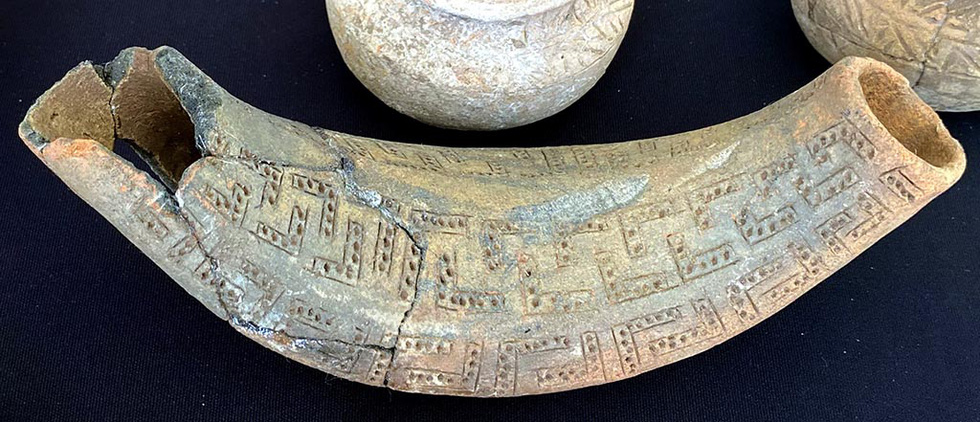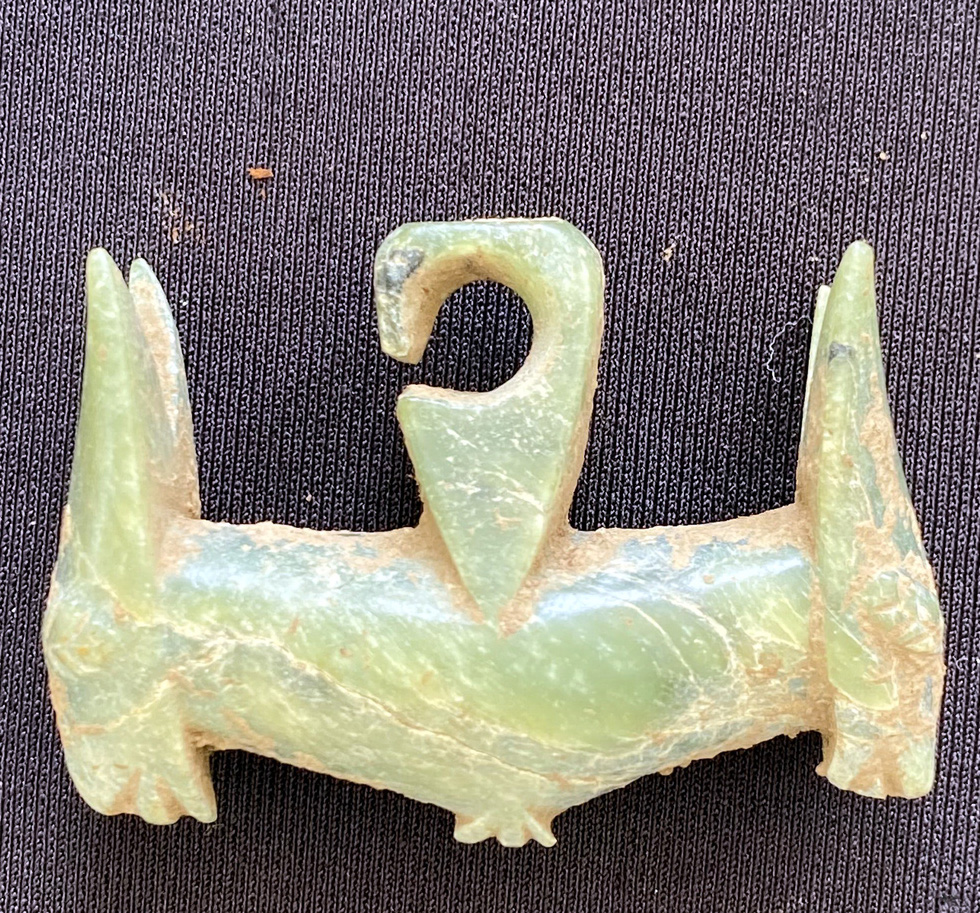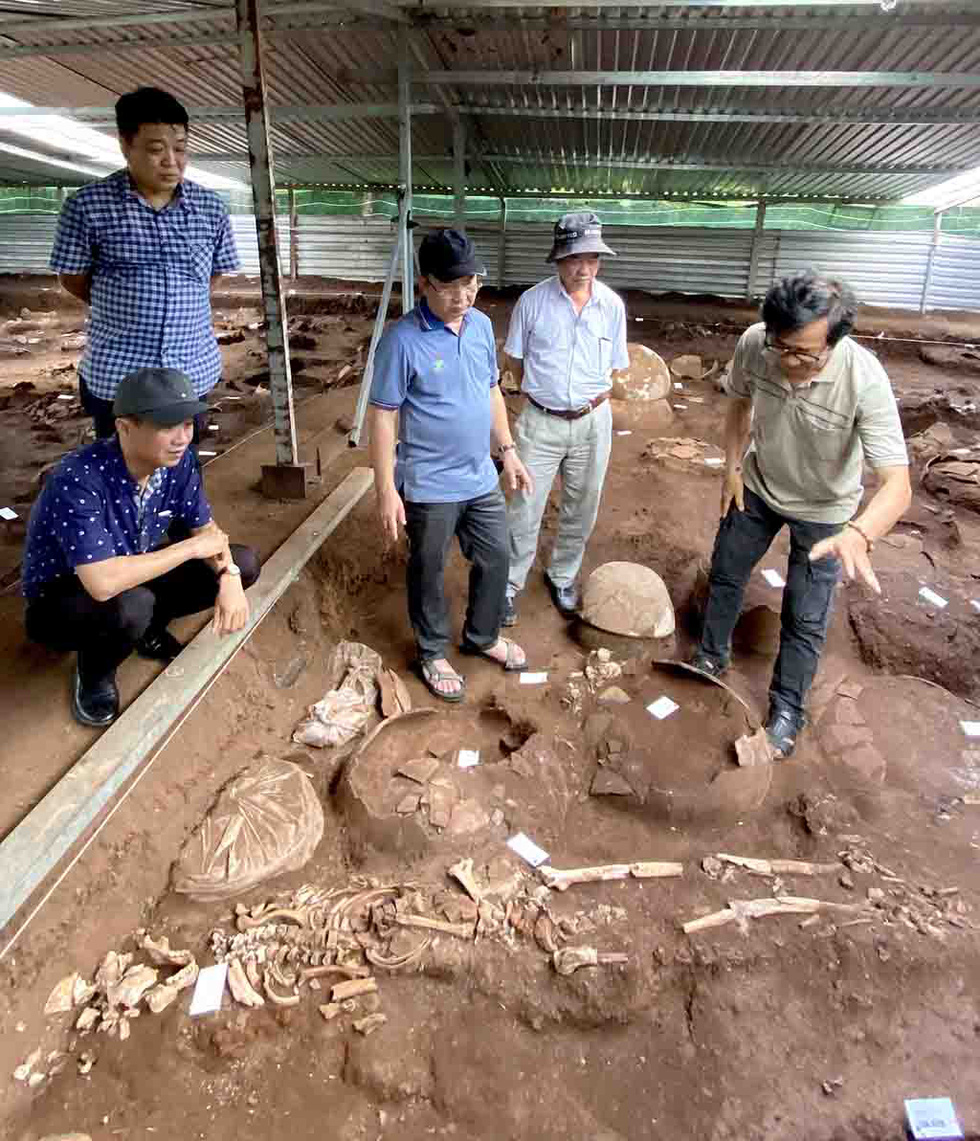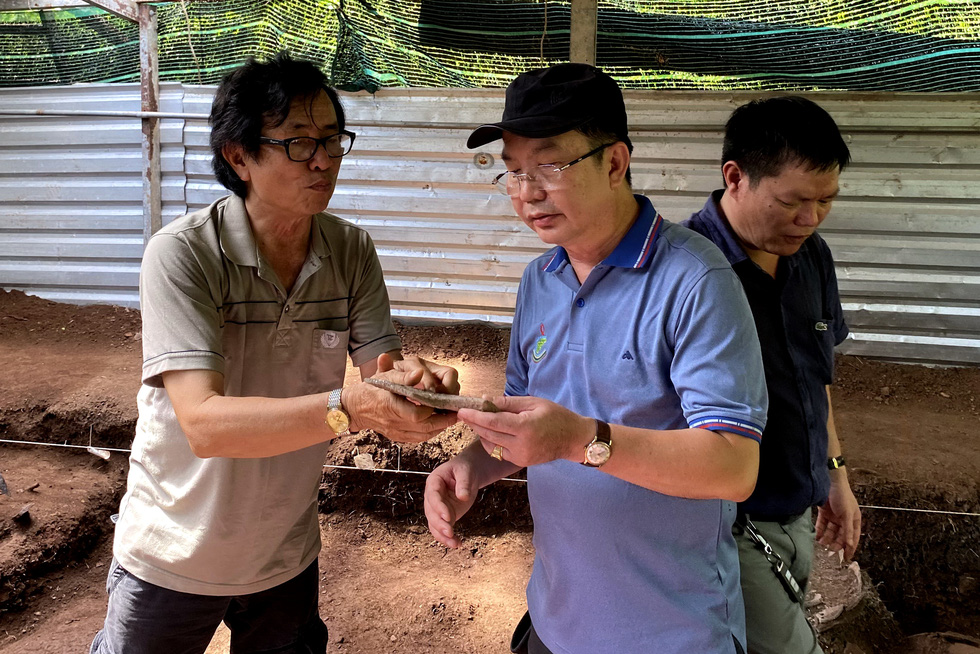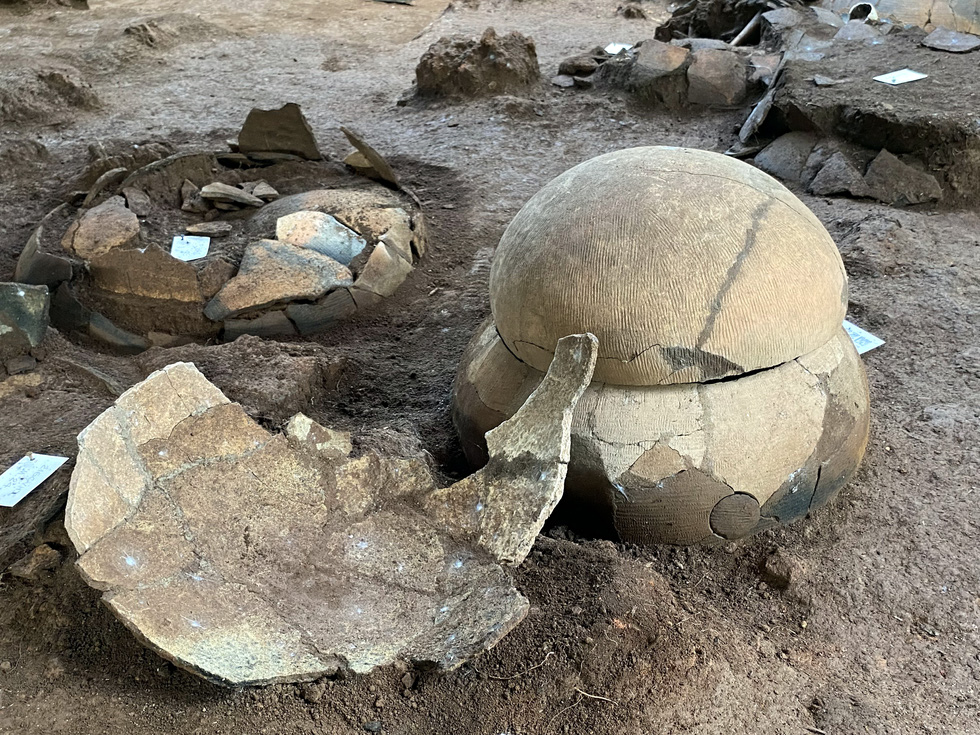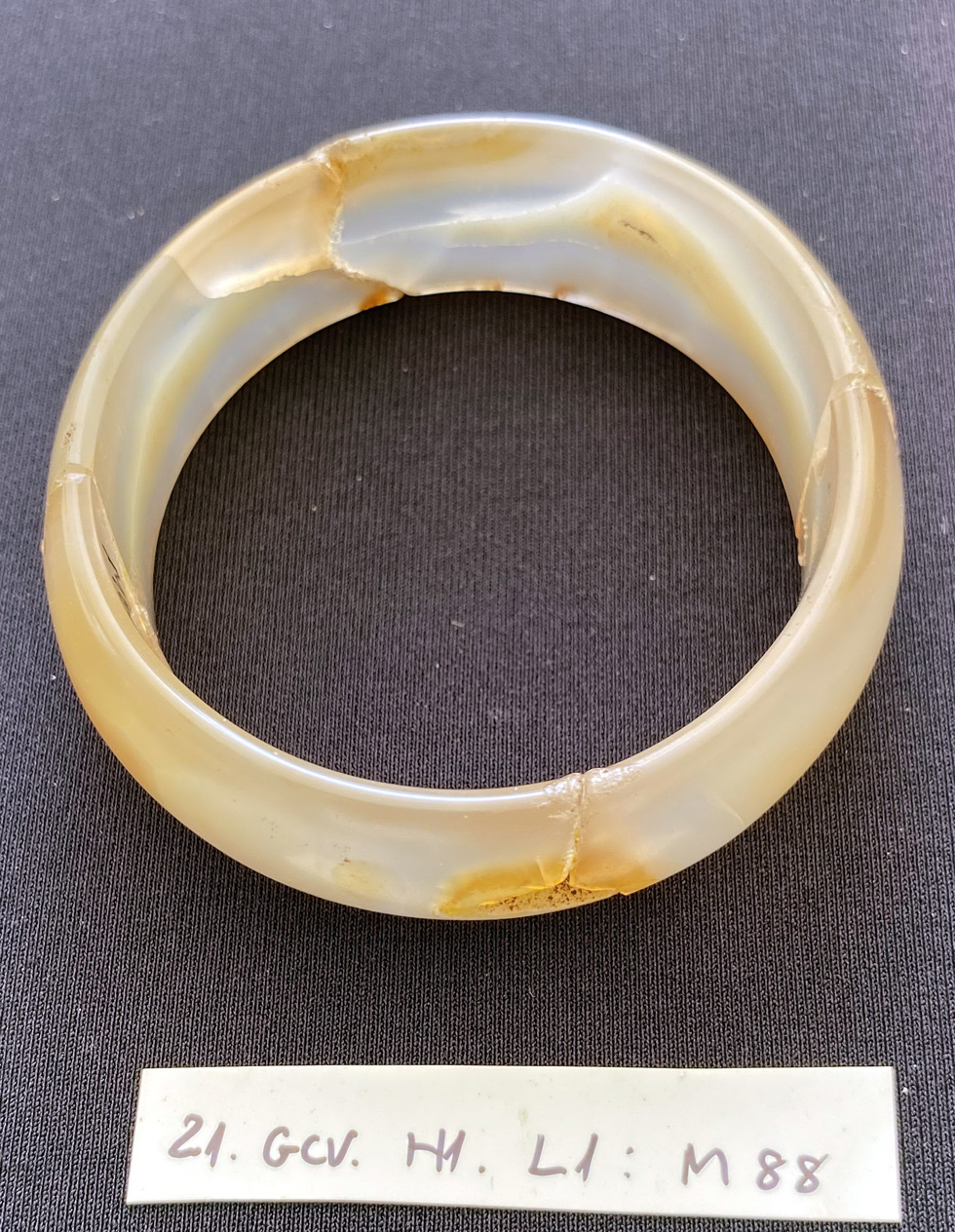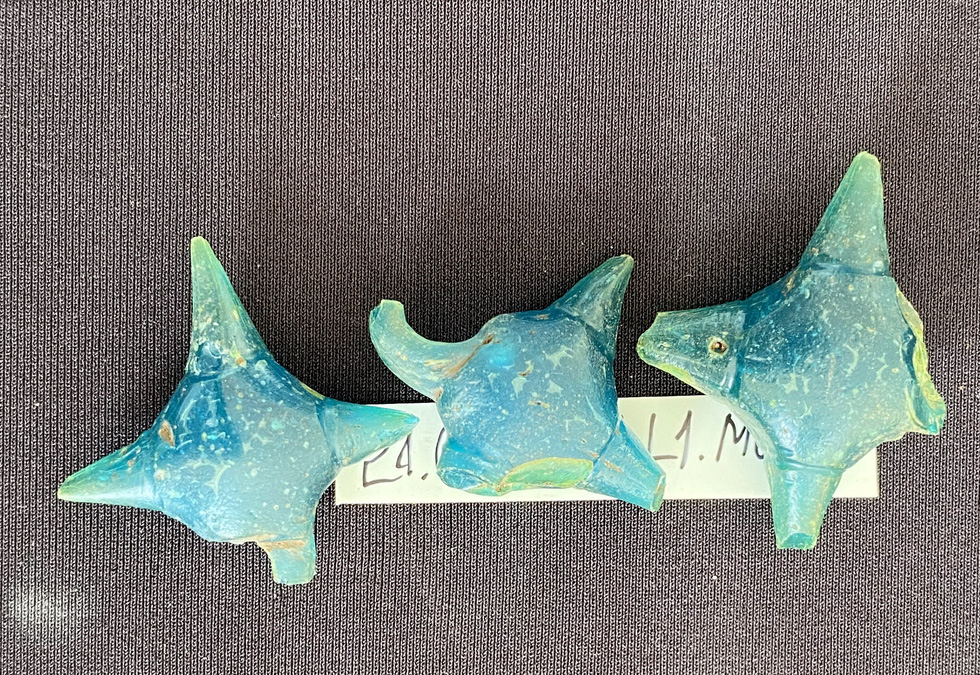Fragments of human bones dating back about 2,300 years were uncovered at the Giong Ca Vo archaeological site in Ho Chi Minh City’s outlying district of Can Gio.
The discovery was part of the results of the 2021-22 excavation jointly conducted by the Institute of Archeology under the Vietnam Academy of Social Sciences and the History Museum of Ho Chi Minh City.
It was reported during a working trip of Tran The Thuan, director of the municipal Department of Culture and Sports on Friday last week.
Surprising discoveries
Besides five exploratory holes, a hole measuring over 200 square meters was dug. In the hole, 224 burial jars and 15 tombs were found.
In a tomb, archeologists discovered the remains of an ancient person believed to be a 1.65-meter man.
Two fangs were also found, suggesting that the person had a high position in society.
|
|
| A piece of stone earring shaped like two animals’ heads. Photo: L.Dien / Tuoi Tre |
The Giong Ca Vo archeological site, which is determined to date back 2,200-2,300 years, has been well known for multiple relics found in 1992 and 1994.
However, the excavation since March 2021 has shown many important results.
For instance, each burial jar there was found to have a soul escape window, which is a small round hole.
These holes even have lids, which are ceramic round pieces.
This burial rite of ancient people in Can Gio will open up many research plans for local and foreign archeologists.
According to Associate Professor Dr. Dang Van Thang, who has followed excavations at the Giong Ca Vo archeological site since 1990, with many glass relics, such as earrings, necklaces, and bracelets, ancient residents in Can Gio could have made glass tools and jewelries circa 300-200 BC.
“They might have learned techniques from India,” Thang said.
Four skulls of Can Gio ancient people found in burial jars are the most impressive.
The information of the four undamaged skulls made Associate Professor Dr. Nguyen Lan Cuong rush to Giong Ca Vo from Hanoi in August to process these important bones.
Thang also thought that the Gerasimov technique can be applied to reconstruct the faces of Can Gio ancient people from these skulls.
Many special relics were also discovered, including a patterned ceramic horn, a white agate bracelet, green stones, a piece of stone earring shaped like two animals’ heads, and colored glass earrings.
|
|
| Dang Van Thang (right) introduces the remains of the ancient man in Can Gio District to Tran The Thuan (R, 3rd), director of the Ho Chi Minh City Department of Culture and Sports. Photo: L.Dien / Tuoi Tre |
Giong Ca Vo on Southeast Asian archeology map
This discovery together with many valuable relics have cemented the position of Vietnam on the archeological map of the Southeast Asian region.
After crossing the Ha Thanh River to approach Giong Ca Vo, director of the Ho Chi Minh City Department of Culture and Sports Thuan came to the communal house of Hoa Hiep Hamlet, Long Hoa Commune to see the relics.
Dr. Hoang Anh Tuan, director of the History Museum of Ho Chi Minh City cited Dr. Hsiao Chung Hung, an archeologist of the Australian National University, as saying that Giong Ca Vo is an important archeological site of Vietnam and Asia as a whole.
It connects eastern and western regions as well as northern and southern regions.
About 2,500 years ago, the site might have been a busy port which was home to many artisans.
In 2000, the Giong Ca Vo archeological site was recognized as a national historical and cultural relic.
Thuan said that the municipal Department of Culture and Sports would prepare dossiers to propose recognizing Giong Ca Vo as a special national cultural historical relic.
Meanwhile, Dr. Tuan suggested opening an exhibition room for relics and items disinterred in Giong Ca Vo.
Giong Ca Vo is located on the left bank of the Ha Thanh River, a branch of the Dinh Ba River, so tourists from Ho Chi Minh City can reach the site by boat.
It will be developed to connect tourism and archeology and become a venue for local and overseas archeological and academic activities.
|
|
| Dang Van Thang (left) introduces a piece of Olive ridley sea turtle’s shell, which is a pottery making tool of ancient people in Can Gio. Photo: L.Dien / Tuoi Tre |
Dr. Nguyen Thi Hau, who has participated in the excavation of Giong Ca Vo since 1990, said after three continuous excavating trips in 1992, 1993, and 1994 and another in 2021 - 22, archeologists have outlined the history of Can Gio in the period of 2,000-3,000 years ago.
By studying the culture of Southeast Asia in the prehistoric age, it can be inferred that sea, especially trade or migration through sea, is the cause for the cultural assimilation reflected through burial jars.
The East Vietnam Sea always plays an important role in the development of the Southeast Asian region.
It promotes the development of the Champa culture from the Sa Huynh culture and the Oc Eo culture to the Can Gio culture, Hau added.
|
|
| The high density of burial jars at the Giong Ca Vo archeological site. Photo: L.Dien / Tuoi Tre |
|
|
| A white agate bracelet. Photo: L.Dien / Tuoi Tre |
|
|
| Colored glass earrings. Photo: L.Dien / Tuoi Tre |
Like us on Facebook or follow us on Twitter to get the latest news about Vietnam!



